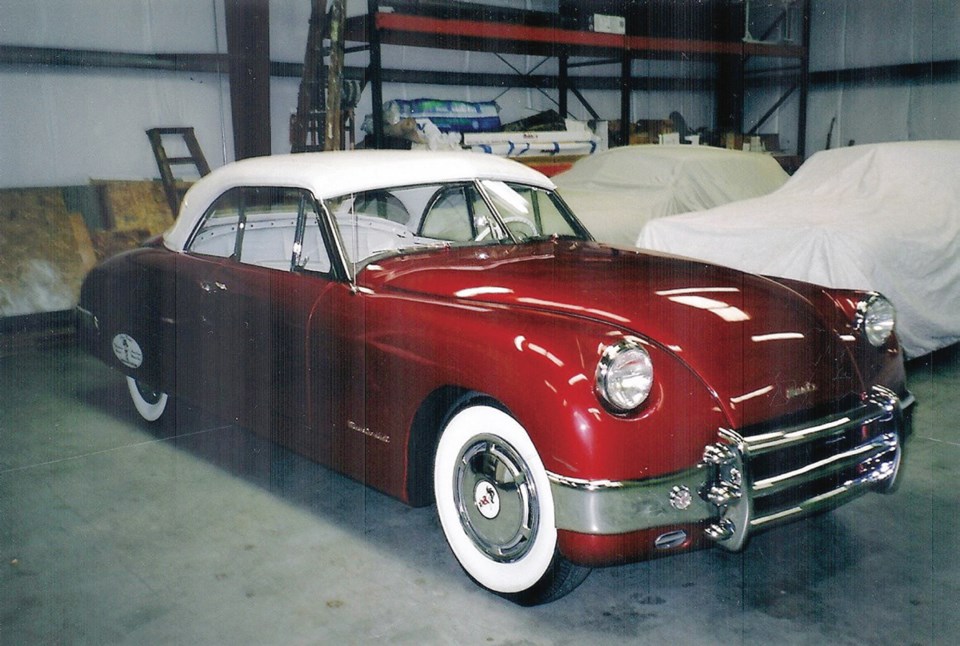Earl “Madman” Muntz might have been called crazy and other uncomplimentary things, but he was far from nuts. Under that flamboyant exterior was a shrewd entrepreneur.
Earl William Muntz was born in Elgin, Illinois, in 1914, and while still a teenager he began buying used Model T Fords, fixing them up and selling them for a profit.
By age 20, he had a used-car lot, and two years later was a Chrysler-Plymouth dealer. He also took up midget-car racing.
Hearing of a car shortage in California, Muntz began shipping used cars out there where they brought much higher prices.
He soon saw California as his future, and in the early 1940s moved his used-car business to Glendale. Through flamboyant radio and billboard advertising that earned him his Madman moniker, he became the largest used-car dealer in Los Angeles.
When construction magnate Henry Kaiser and Graham-Paige president Joe Frazer formed Kaiser-Frazer in 1945, Muntz became a California distributor for Kaiser-Frazer cars.
Muntz, by now a multimillionaire, observed a new and growing phenomenon called television. He began manufacturing low-cost TV sets and developed the business into the fourth largest television maker in the country.
But Muntz was still keen on cars, and decided to start building them himself. The Kaiser-Frazer business was tapering off, and in the late 1940s Muntz noted the rising interest in sports cars. He set out to produce an American sports car, although it would turn out more sporty car than sports car.
A name familiar to Muntz from racing days was Frank Kurtis, a successful and prolific race-car builder whose Glendale-based Kurtis-Kraft shop had produced hundreds of race-winning midgets. His famous low-slung Indy “Roadster” would dominate the Indianapolis 500 for many years.
In the late 1940s, Kurtis entered the sports-car market with his Kurtis Sports Car, a two-seater just 1,219 millimetres high with a 2,540 mm wheelbase. One powered by a hopped-up Ford V-8 engine exceeded 225 kilometres per hour on the Bonneville salt flats in 1949.
Kurtis got his car into production, but during 1948-49 sold only about 20 of his mostly aluminum-bodied convertibles. When high production costs forced Kurtis to abandon it, Muntz bought the operation, including parts, blueprints, tooling and manufacturing rights. He then formed the Muntz Car Co. inc.
Muntz named his car the Muntz Jet, and realized that for broader appeal it needed some changes.
He retained Kurtis’s then popular “inverted bathtub” styling and combination grill and bumper. He lengthened the wheelbase to 2,870 mm, turned the two-seater into a four-seater and fitted a lift-off solid top.
Long before the industry was showing interest in safety, Muntz installed seatbelts and a padded dash.
Muntz replaced Kurtis’s Ford V-8 with the newly introduced 5.4-litre, overhead valve, 160 horsepower Cadillac V-8. Production began in Kurtis’s Glendale plant, but Kurtis soon needed the space, so after only 28 Muntzes were built, Muntz relocated to Evanston, Illinois, close to his old home.
He changed the body from aluminum to steel and stretched the wheelbase another 76 mm to 2,946 mm. Overall length was 4,724 mm.
He replaced the Cadillac engine with a modified Lincoln flathead V-8, and toward the end of production began using Lincoln overhead valve V-8s.
Road & Track tested a 1951 Lincoln-engined Muntz with automatic transmission, and although performance wasn’t close to the Bonneville Kurtis, it was still respectable.
The sporty 1,715-kilogram Jet clocked zero to 97 km/h in 12.3 seconds and a top speed of 174 km/h, making it the fastest American production car.
Muntz sold directly to the public, not through dealers. Muntzes were very popular in Hollywood, said to be owned by such entertainers as Mickey Rooney, Clara Bow (the silent movie “It” girl), band leader Vic Damone and Ed “Rochester” Gardner, comedian Jack Benny’s sidekick. Muntzes also appeared in many movies.
Although the $5,500 price was considerably more than a Cadillac or Jaguar XK120, Muntz claimed he lost $1,000 on each one, probably correct in view of the large amount of handwork.
When Muntz Jet production stopped in 1954, Muntz claimed he had built 394 Jets, a figure that has been disputed. Some Muntz researchers put total production closer to 200.
The end of the Muntz car wasn’t the end of Muntz’s activities. He went on to manufacture products such as car stereo systems, tape recorders and air conditioners. His personal life was also active, going through seven marriages, following which he dated comedienne Phyllis Diller for some time.
Earl “Madman” Muntz died in 1987 at age 73, leaving as his automotive legacy the Muntz Jet, a very desirable collectible.



